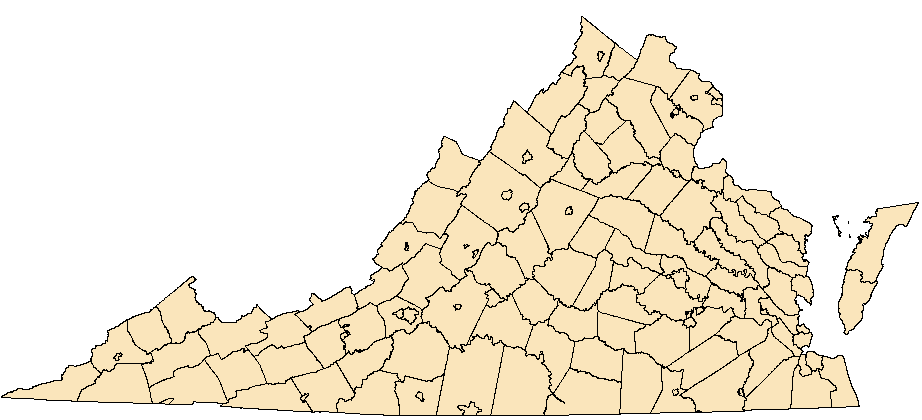Gomphus viridifrons Hines, 1901
Green-faced Clubtail
NatureServe Global Rank: G3G4
Virginia State Rank: S2
VA DGIF Tier: II
Federal Legal Status: None
Virginia Legal Status: None
Description: The Green-faced Clubtail is a small clubtail with a mostly black abdomen except for small yellow triangles on the dorsal base of each segment and a larger yellow marking on the side of segment eight. There is a single black line across the face. The name of this is species is a bit misleading as the face isn't really very green, being more whitish than green, but the eyes are green. The size is 45- 46 mm (1.8 inches).
Similar species: The Green-faced Clubtail is very similar to several other closely related clubtails in the subgenus Hylogomphus. These include G. parvidens (Piedmont Clubtail), G. adelphus (Mustached Clubtail), and G. abbreviatus (Spine-crowned Clubtail). Identification, especially of females, usually requires in-hand identification or a specimen.
North American Range: The Green-faced Clubtail is found from the western Great Lakes south into Ohio and Tennessee. In Virginia, records are primarily restricted to southwestern counties, but there are recent records from the James River in the Piedmont region.
VA Observations by Locality: Botetourt | Carroll | Floyd | Grayson | Scott | Dickenson | Floyd | Grayson | Wise










Flight season and broods: The Green-faced Clubtail has been found from 18 April - 12 July in Virginia.
Aquatic Habitat: It prefers larger rivers with rocks and moderate current.
Behavior and Ecology: May be most active in cloudy conditions or late in the afternoon.
Population trend and potential threats: Regarded as imperiled or critically imperiled throughout most of its range (NatureServe, 2011).
Management practices: Monitor and protect occupied habitats.
References: Carle, F.L., 1982. A contribution to the knowledge of the Odonata. Ph.D. thesis, Virginia Polytechnic Institute and State University, Blacksburg, Virginia. 1,095 pp.
NatureServe. 2011. NatureServe Explorer: An online encyclopedia of life [web application]. Version 7.1. NatureServe, Arlington, Virginia. Available http://www.natureserve.org/explorer (Accessed: Jan 1, 2013).
Paulson, Dennis. 2011. Dragonflies and Damselflies of the East. Princeton University Press. Princeton and Oxford. 538 pp.
Roble, Steven M. 2011. Dragonflies of Virginia- Flight dates. Unpub.
Virginia Department of Conservation and Recreation, Natural Heritage Program, 600 E. Main St., 24th Floor, Richmond, VA 23219
This atlas was compiled
by the VA Natural Heritage Program with funds provided by the VA Dept. of Game and Inland Fisheries through a state wildlife grant
from U.S. Fish and Wildlife Service
Questions/Comments? Check the contacts page |
Internet Privacy Policy Statement
Last Modified: Friday, 26 February 2021, 03:21:56 PM